ADVERTISEMENT
Building Code
National Contingency Plan has no Plan for Tropical Storm or Hurricane
As Hurricane is expected to bear down on Haiti, motivated the island's National Contingency Plan (NCP) to release information of what to expect when the storm landed. NCP offered no preparedness tips, but a litany of alarming predictions: the death rate will soar, rural migrations to urban areas will multiply, and disease will be endemic.
More than half a million nationalists are in danger; a 100,000 increase from 2012's forecast. The government is unable to provide adequate services for the ballooning populations.
Home Building in Haiti and the lack of Building Code enforcement
Haiti has a building code; it is the enforcement of this code which is lacking. While understandable in the case of the poor who cannot afford the extra money it will cost to safe-guard the integrity of their houses, one is left to wonder where the Code Enforcement Officers were when many schools, government buildings, churches and hospitals were being built. It is of great importance that, going forward, the collapsed buildings are not being replaced by much of the same.
Construction Materials in Building in Haiti
It is estimated that 90% of the buildings in Haiti were made from materials not suited for earthquake resistance. The costs to build a structure that can withstand earthquake tremors can rise to anywhere from 10% to 20% of the building costs. Finding these costs prohibitive, most people opt out of the precaution as they simply can't afford it. The materials most commonly used include a mixture of branches, twigs and sticks called clisse, stone, bricks, earth and cement. Duplicitous contractors will use unrefined sand and limestone dust to make a cheaper, and consequently weaker concrete.
The informality of building construction in Haiti
Many experts, including OAS Department of Sustainable Development director, Cletus Springer and seismologist, Ian Main agree that the catastrophic effects of the 2010 earthquake were aided by the informality of the buildings' constructions. Not only is this true for housing constructed for and by the poor, but even in official business buildings. The neglect of the strictures of the building code led to the loss of infrastructure in 80% of the schools, 60% of the hospitals and all but one of the government buildings in Haiti.
Home Building in Haiti - Inadequate Lateral Load Resisting
Weighty concrete ceiling and floor slabs were made for hurricane weather. During an earthquake, the construction of most low-rise buildings meant the walls were dislodged and discharged. The confined masonry system should have worked well under those conditions, but, the frames built in Haiti were mostly inadequately designed and were not integrated enough with beams and columns that were reinforced. As a result, the walls do not have the in-plane load bearing capabilities necessary to withstands strong tremors.
Home Building in Haiti - Code and Code Enforcement
With Haiti being without its own building code, the cue for most builders usually comes from Europe or the U.S. While the Caribbean has its own code, CUBiC, (Caribbean Uniform Building Code), few Haitian engineers employ the standards. Further to that, most buildings were not even built based on designs by an engineer. Permits must be sought for builds, but plan checks and construction inspections are rare and, as such, many buildings are not up to code, making them susceptible to collapse and degradation, especially since they are not diligently maintained.
Home Built on shaky ground in Haiti
A typical house in Haiti starts with a foundation about a meter in depth. For homes and buildings built on an incline, the foundation can rise to as much as 2 meters above the ground. Concrete masonry units, not fired clay bricks, as were prevalent in the 19th century, are used for walls. The unreinforced units are given frame by concrete columns which are reinforced lightly. Slab roofs and floors are common, with one layer of reinforcement for a 4 to 6 inch thickness. These structures are usually single-storied, but are also as tall as two or three stories.

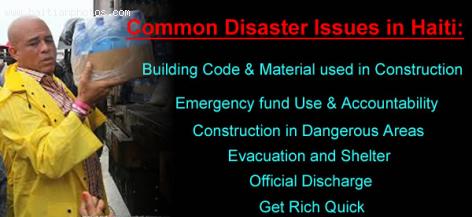
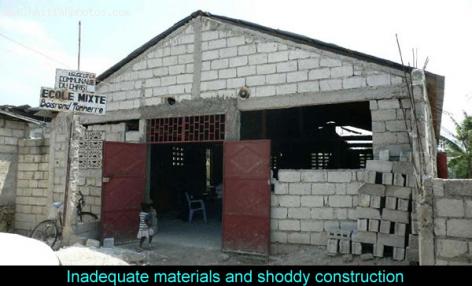
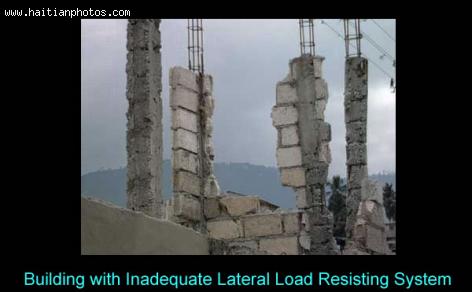
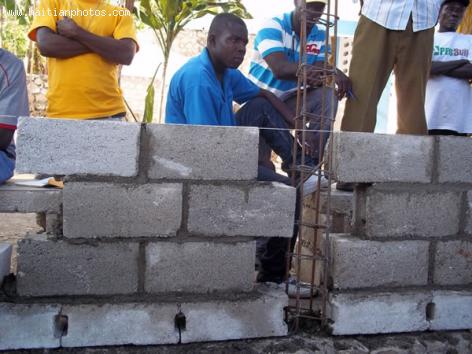
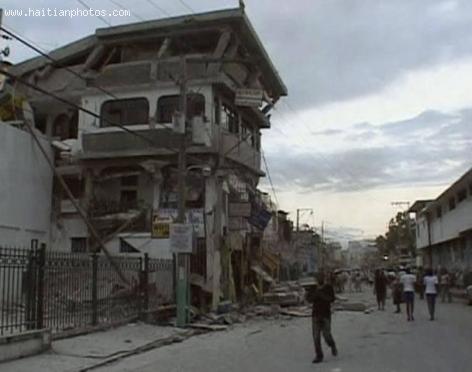
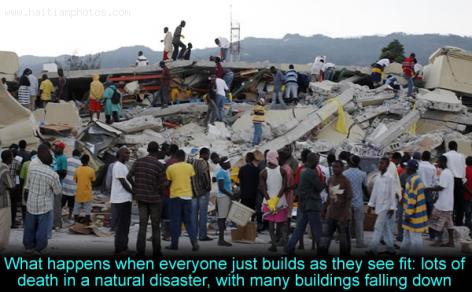
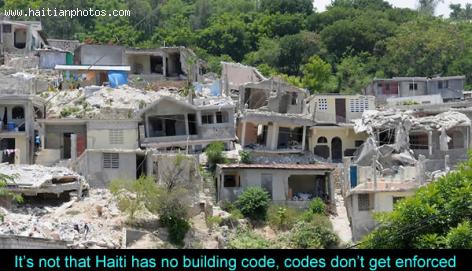
 Henri Namphy Haitian General and President , buried in...
Henri Namphy Haitian General and President , buried in...  Madame Max Adolphe, Fiette Lalo, Was A Member Of Francois...
Madame Max Adolphe, Fiette Lalo, Was A Member Of Francois...  Histoire D'Haiti
Histoire D'Haiti  Haitians, the second largest black immigrant group in the US
Haitians, the second largest black immigrant group in the US  Port-au-Prince on fire over gas prices hike
Port-au-Prince on fire over gas prices hike  Commissioner Frantz Pierre indicted for accepting bribes
Commissioner Frantz Pierre indicted for accepting bribes  Haitiano-Japanese Naomi Osaka wins the US Open against Serena...
Haitiano-Japanese Naomi Osaka wins the US Open against Serena...  Rafael L. Trujillo welcoming Paul Magloire in Santo Domingo
Rafael L. Trujillo welcoming Paul Magloire in Santo Domingo 



